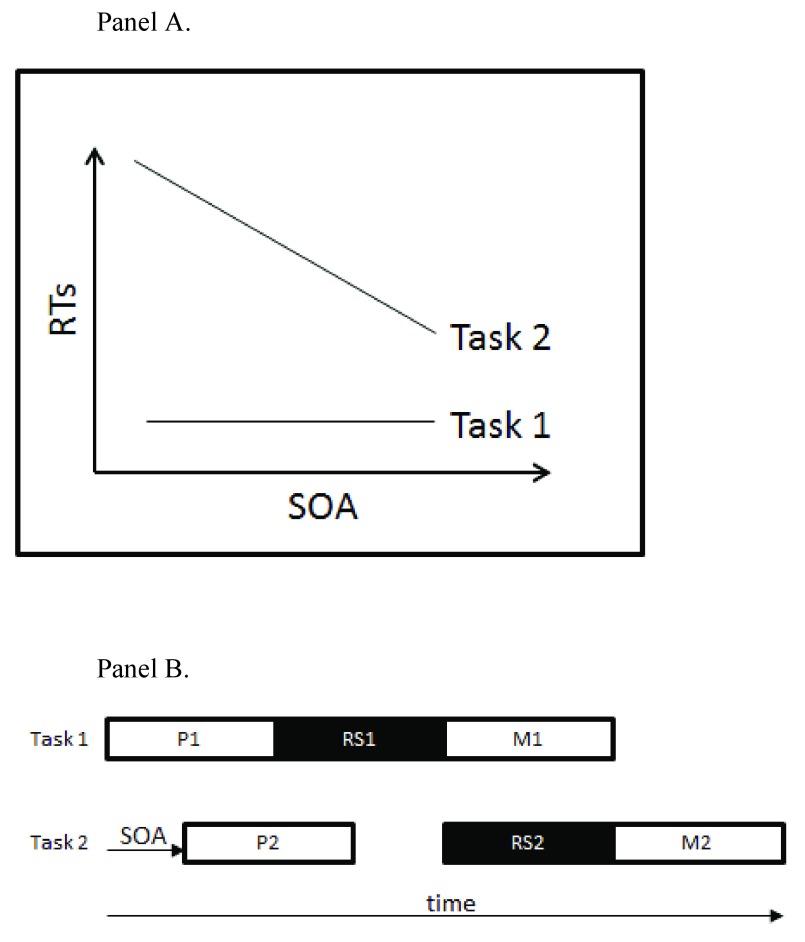Figure 1.
Panel A: Illustration of typical performance pattern (i.e., reaction times [RTs]) in the context of dual tasks of the psychological refractory period (PRP) type. While performance in Task 1 is independent of the stimulus onset asynchrony (SOA), Task 2 performance is impaired with decreasing SOSOA. The RTRT increase from long to short SOAs reflects the PRP effect. Panel B: Dual-task processing architecture according to the central bottleneck model (e.g., Pashler, 1994a) in PRP dual tasks with SO A manipulations. Central response-selection (RS 1; RS 2) stages in Task 1 and Task 2 are processed sequentially while perception (P1; P2) and response (R1; R2) stages are processed in parallel. Response selection stages (e.g., in Task 2) are lengthened due to the manipulation of the compatibility between stimuli and responses (McCann & Johnston, 1992) while perception stages are lengthened due to the manipulation of stimulus intensity (Pashler & Johnston, 1989). In particular, extra time needed for the lengthened perception stage in Task 2 can run in parallel to RS1 and is thereby absorbed into the waiting time of RS 2 until RS 1 is completed.

